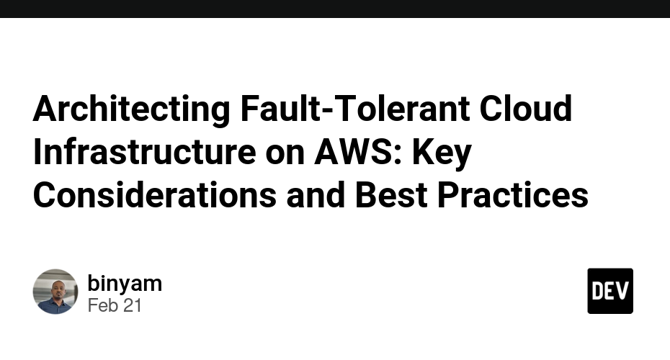Dev
1M
215

Image Credit: Dev
Architecting Fault-Tolerant Cloud Infrastructure on AWS: Key Considerations and Best Practices
- Fault tolerance in cloud infrastructure on AWS is crucial for ensuring uninterrupted service and high availability.
- Architecting fault-tolerant systems involves redundancy, automation, and distributed architectures on AWS.
- Key considerations include designing for redundancy, leveraging managed services, using auto scaling and load balancing, implementing distributed data storage, planning for disaster recovery, monitoring and automating recovery, securing infrastructure, and testing fault tolerance.
- Best practices involve following the Well-Architected Framework, using Infrastructure as Code, adopting microservices architecture, implementing circuit breakers, leveraging Spot Instances, and regularly updating and patching systems.
- A real-world example of a fault-tolerant e-commerce application on AWS includes using CloudFront, ALB, Amazon ECS or EKS, Amazon Aurora, Amazon S3, AWS Backup, and Route 53.
- Architects must focus on redundancy, automation, and proactive monitoring to build resilient, scalable, and cost-efficient systems on AWS.
- Continuous testing, refinement, and optimization are essential for maintaining fault tolerance in cloud infrastructure.
- It's emphasized that fault tolerance is an ongoing process that requires iterative improvements for ensuring uninterrupted service delivery.
Read Full Article
12 Likes
For uninterrupted reading, download the app